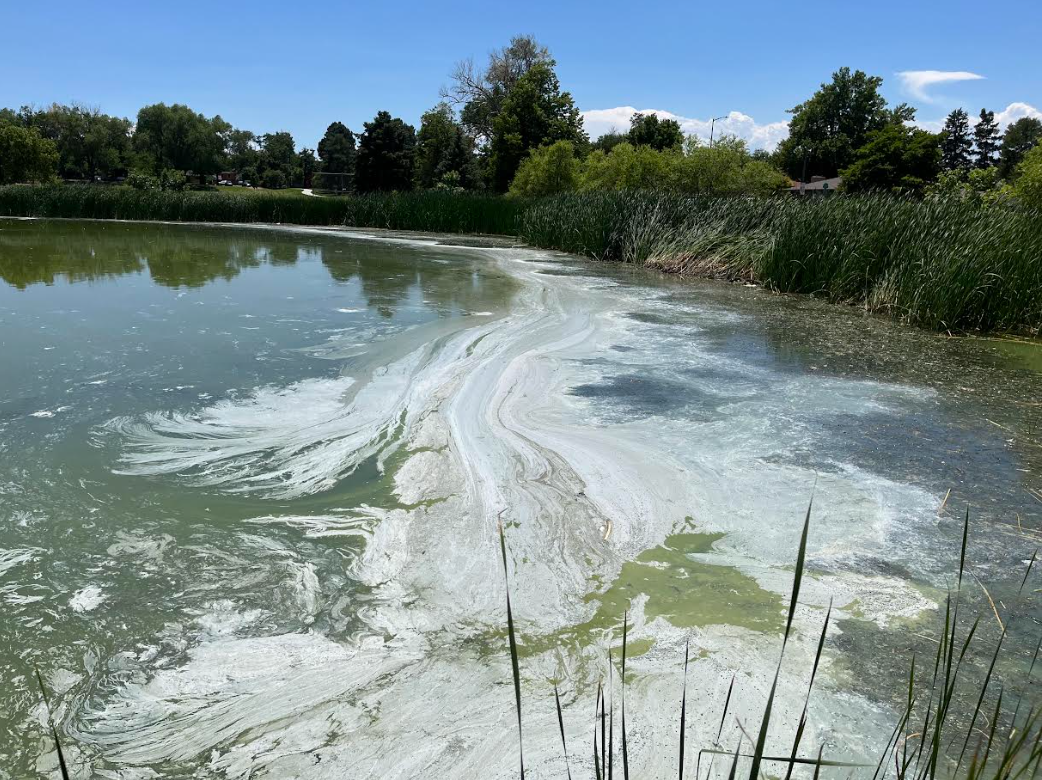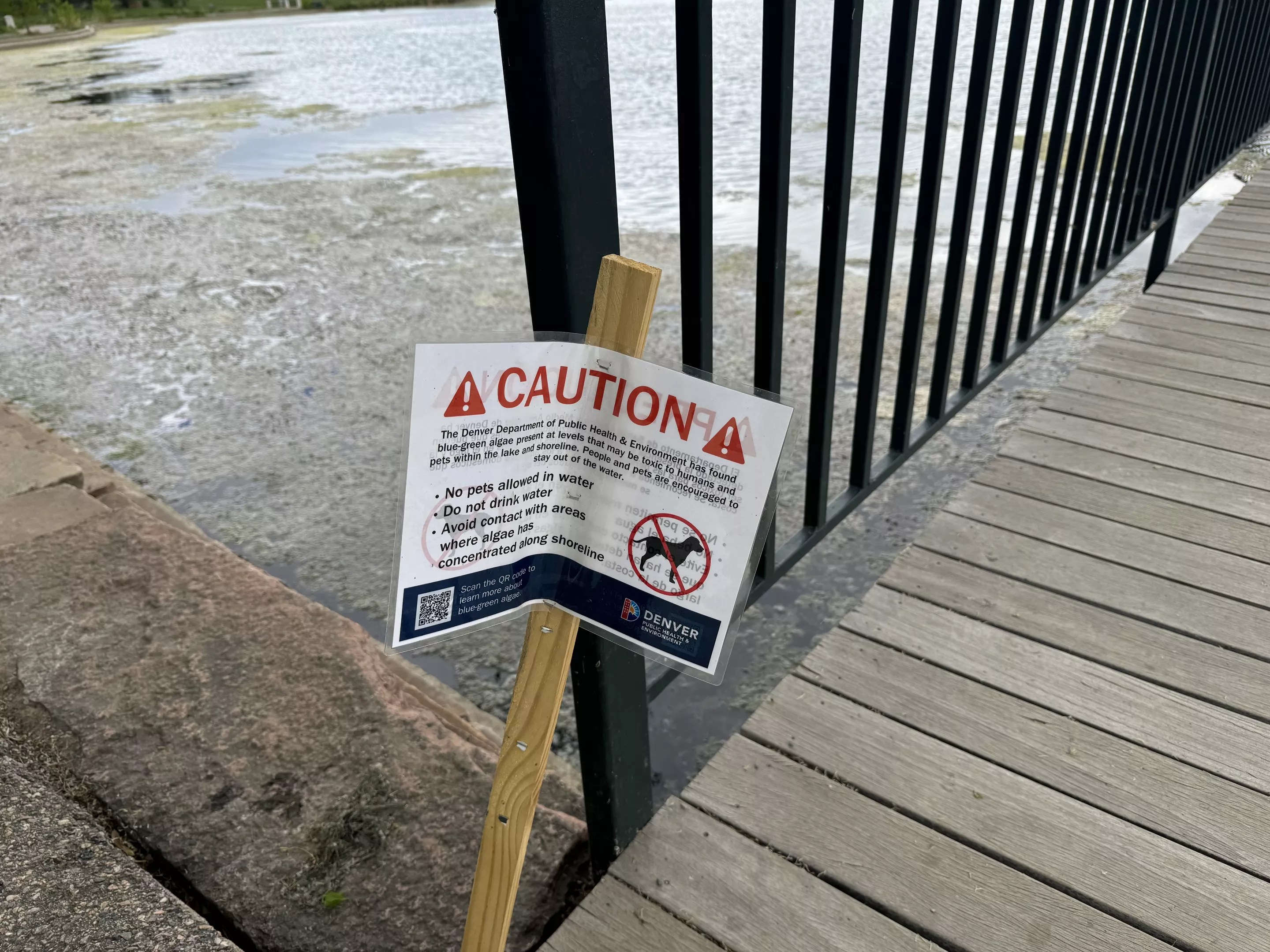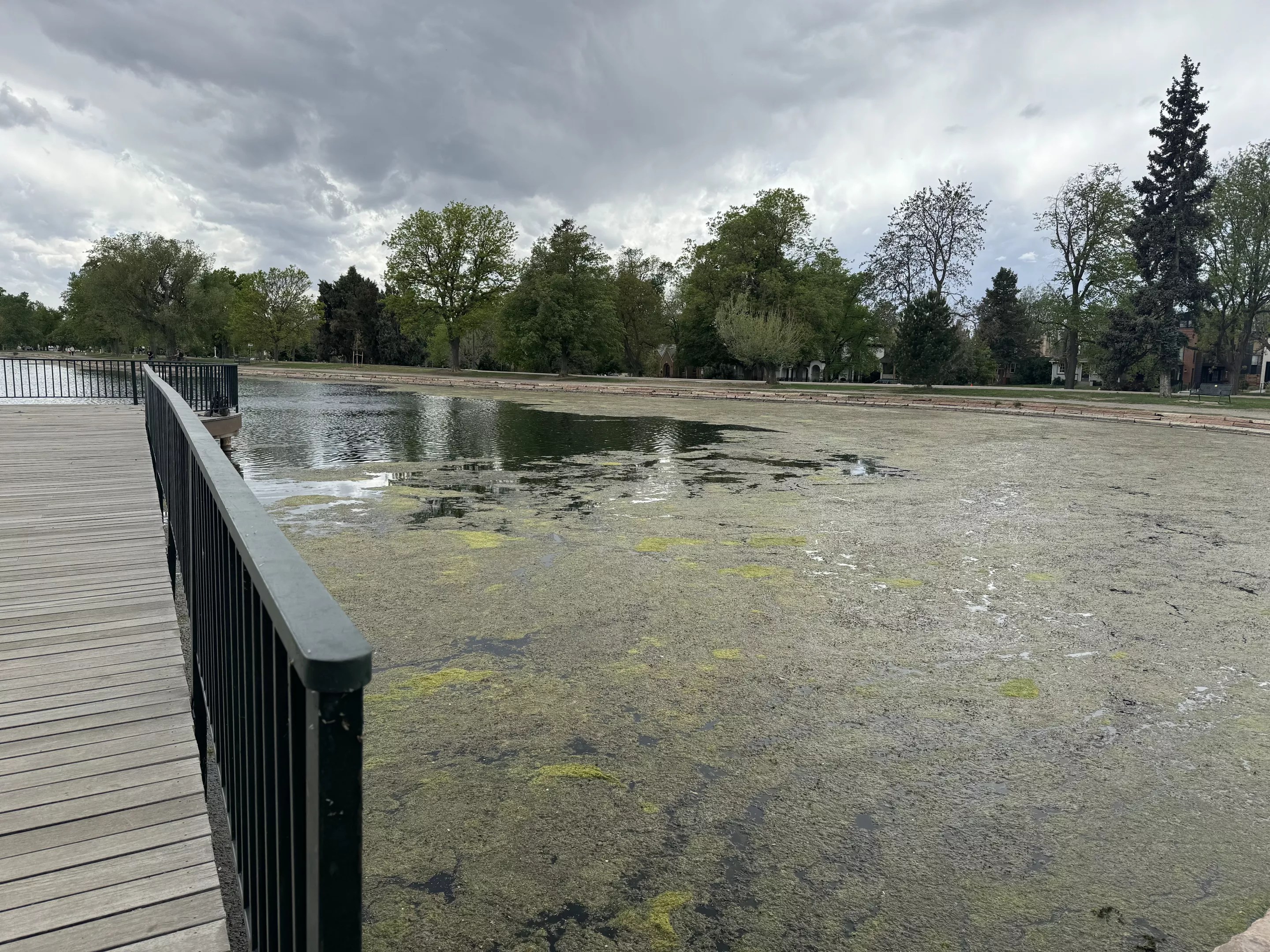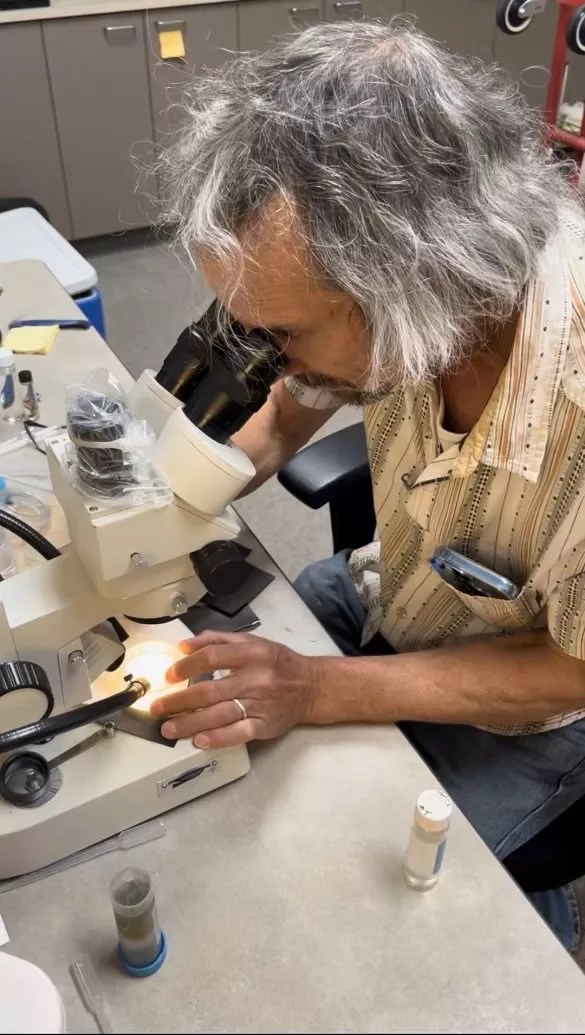
Denver Department of Public Health & Environment

Audio By Carbonatix
Algae season came early to Denver this year.
In early May, the Denver Department of Public Health & Environment discovered a blue-green algae bloom in Grasmere Lake at Washington Park. Usually the toxic algae pops up in lakes and ponds around Denver’s park system in the middle of the summer during peak temperatures, but this year the water was warm enough by May, according to Al Polonsky, DDPHE’s senior environmental public health analyst.
Unlike the slimy strands people typically think of when algae comes up, blue-green algae looks similar to spilled paint or pea soup in appearance. However, the recent blooms in Gransmere Lake look more like non-toxic algae, with a plantlike appearance.
“On all of our lakes we have filamentous algae, the one that most people think of as nasty algae,” Polonsky explains. “They always assume that’s the bad one, but usually it’s one that we can’t see, or the water might be discolored…but this doesn’t look like what we say blue-green algae looks like.”
The health department always encourages people to be better safe than sorry, and refrain from recreating in the streams and lakes in city parks regardless of blue-green algae, citing other dangerous factors, like the presence of E. coli. But in the summer, blue-green algae adds another serious reason to stay out of the water in Denver parks.
During summer months, the DDPHE tests Denver’s waterways for toxins from blue-green algae and will post signs where the toxins are detected. Importantly, people need to keep their dogs out of the water, Polonsky explains.
“It always feels weird that we’re so focused on dogs, but people aren’t going to come out here and drink the water,” he adds.
Dogs are susceptible to being hurt by blue-green algae because they ingest bacteria by grooming themselves after playing in infected water. The toxins from blue-green algae can cause skin irritation, gastrointestinal distress, respiratory issues and even seizures.
If a dog does wander into water with blue-green algae, they should be rinsed off with clean water and monitored for symptoms, according to the DDPHE, and owners should call a vet immediately if any symptoms appear.

If you see one of these signs at a Denver park, be extra careful around the water.
Catie Cheshire
Polonsky, who has worked for the DDPHE for decades, only recalls one occasion when dog had a serious health incident caused by blue-green algae around fifteen years ago, before blue-green algae was a prominent item on the DDPHE’s radar. Polonsky has learned a lot about the bacteria since then, while the city has made strides in decreasing the organism’s presence in Denver parks, he says.
Blue-green algae is a naturally occurring part of lake environments, but chances for toxins increase when the bacteria blooms in the summer.
According to Polonsky, blue-green algae needs certain nutrients, light and warm temperatures to grow. Denver’s lakes have an abundance of phosphorus from runoff through the city’s streets and gutters. Plus, blue-green algae can pull nitrogen, another nutrient, out of the air unlike most plants that need to pull nitrogen from the soil.
When sunlight hits the shallow waters in Denver’s parks and temperatures rise, the algae is ready to grow. Not all blue-green algae has toxins, however, so the DDPHE uses test kits to determine if toxins are present and can confirm the results using a microscope.
The DDPHE will post a warning sign even if a very low amount of toxins are present, because the department doesn’t have the resources to check every body of water every day and doesn’t want an unseen rise in blue-green algae in between checks.
“The sign used to have a lot more words on it,” Polonsky recalls. “It’s been beaten into me: less words, less words, less words, and I think that really does work better to help us. People don’t sit there and want to read a whole novel. They just want the facts.”
And here are some of those facts: It’s important not to ingest any blue-green algae. Standing on the side of a lake where the algae is present is generally safe, but even skin contact is inadvisable as the algae can cause irritation.

Blue-green algae at Grasmere Lake in 2025 had an unusually plantlike appearance.
Catie Cheshire
In the case of paddle boats or the legendary Sloan’s Lake Dragon Festival boat races, Polonsky says that sort of activity is generally safe, because there is a low chance of bodily contact with the water.
“They might get a little bit in their mouth or in their eyes or something, but it’s going to be real minimal,” he says of people on the Dragon Boats. “It’s a matter of balancing the risk of exposure with the activity.”
The swan boats that are rentable at Wash Park and City Park are safe, too, Polonsky says. Just don’t drink the water or get rowdy and fall out.

Al Polonsky examining an algae sample to determine if there are toxins.
Denver Department of Public Health & Environment
Polonsky says he can’t think of a lake in the Denver park system that hasn’t had blue-green algae bloom with toxins at some point, but the worst offender is the pond in front of the driving range at Aqua Golf, where golfers can practice their swing by smacking balls into the water.
“That’s incredibly the worst, because it’s super shallow and it’s loaded with nutrients,” Polonsky says. “It doesn’t move. There’s no water exchange, so it’s a still lagoon. Algae prefers that. …It’s so shallow. The middle is only, like, three feet deep.”
Polonsky says Aqua Golf is also difficult to collect samples for testing from because patrons often aim golf balls at DDPHE employees if they go during the hours when the range is open. They have resorted to wearing helmets or going early in the morning.
“Some of them are really good,” Polonsky says of the Aqua Golfers. “They just plunk them like 20 feet from us consistently.”
To help with Denver’s blue-green algae problem, the DDPHE encourages people to use phosphorus-free fertilizer on their plants and lawns. Polonksy says in discussions with landscapers, the DDPHE has found that annual yard maintenance doesn’t really require phosphorus fertilizer though it can help when new turf or when grass is freshly installed.
Denver Parks & Recreation has stopped using phosphorus products in the city park system which has helped a lot, Polonsky says. Parks & Rec has also started using products that lock phosphorus up so algae can’t access the nutrients, and uses water column mixing units that help prevent blue-green algae by agitating and mixing the water to block algae blooms and keep nutrients locked in sediment at the bottom of lakes.
In a worst-case scenario, Parks & Rec can use peroxide to control blue-green algae blooms. The chemical doesn’t kill other algaes or other parts of the ecosystem in a lake, Polonsky explains.
Still, killing blue-green algae releases their toxins, so even after a bloom is cleared visibly the water won’t be safe for some time. That’s why it’s important to pay attention to any warning signs posted even if the water looks clear, according to the DDPHE.
The good news is Denver’s efforts to manage blue-green algae are paying off, according to the city’s resident algae expert.
“In the last few years, we’ve been starting to get more blooms that are not blue-green algae,” Polonsky says. “That’s a good sign. It’s because our lake managers, our Parks & Rec department, have been trying different strategies and they’ve been able to knock the blue-green algae back far enough that now we’re starting to get blooms of preferred algae.”